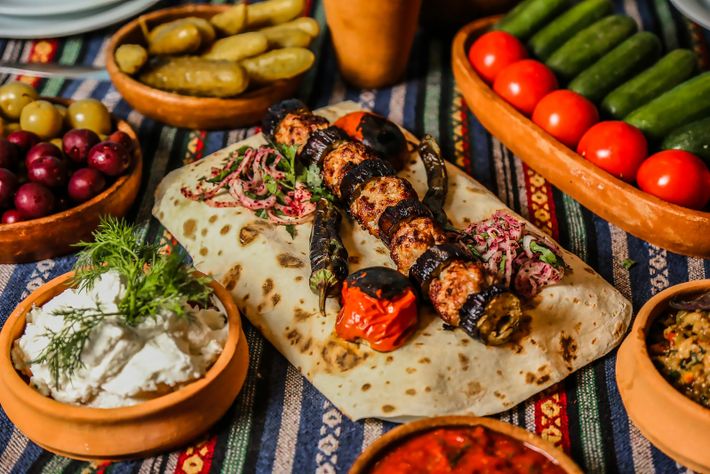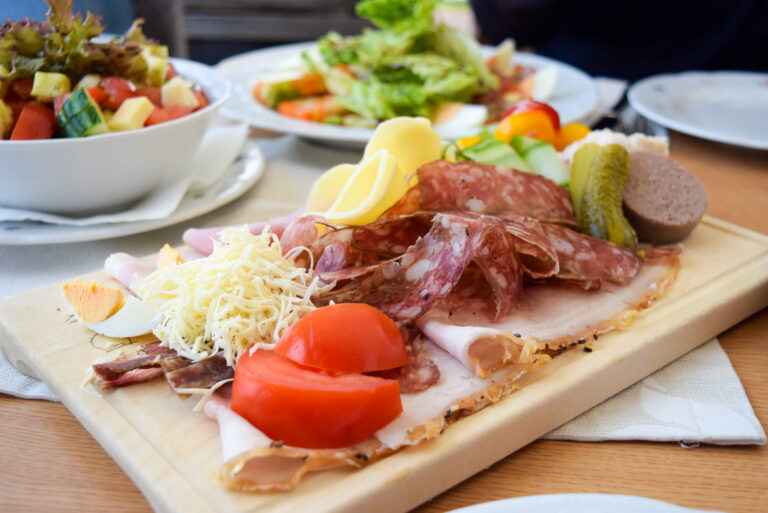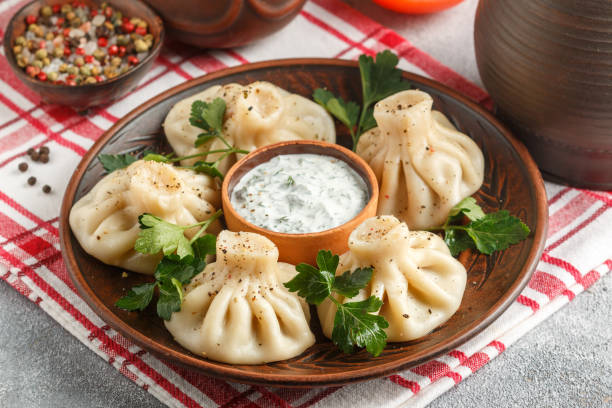Introduction: Azerbaijani Cuisine
Azerbaijani cuisine is a blend of Eastern European and Middle Eastern flavors, with a strong emphasis on meat dishes. The country’s geographic location, situated between Europe and Asia, has influenced its culinary traditions, and Azerbaijan is known for its rich and diverse cuisine.
Meat dishes are at the heart of Azerbaijani cuisine, and the country is famous for its succulent kebabs, hearty stews, and meat-filled pastries. Azerbaijanis take pride in their cuisine, and meals are often communal, with multiple dishes served at once.
Meat in Azerbaijani Cuisine
Meat is a staple of Azerbaijani cuisine, with beef, lamb, and mutton being the most commonly used meats. Chicken, turkey, and fish are also popular, but red meat remains the most prized.
Meat dishes are typically slow-cooked, with spices and herbs used to enhance the flavor. Azerbaijani cuisine also makes use of sour flavors, such as pomegranate molasses and sour cream, which can help to balance the richness of the meat.
Kebabs: A Meat Lover’s Delight
Kebabs are a quintessential Azerbaijani dish, and the country is renowned for its succulent meat skewers. The most popular kebab is the shashlik, which consists of marinated chunks of lamb or beef grilled over an open flame. Other popular kebab variations include the lyulya kebab, which is made with ground meat, and the kebabchik, which is made with small pieces of meat.
Kebabs are often served with a side of grilled vegetables, such as tomatoes and peppers, and a sprinkling of sumac, a tangy spice that complements the meat’s flavor.
Dovga: A Meaty Soup Dish
Dovga is a rich and hearty soup that is popular throughout Azerbaijan. The soup is made with yogurt, rice, and a variety of herbs, and is often topped with a dollop of sour cream.
Meat is a key ingredient in dovga, with chunks of lamb or beef added to the soup to give it flavor and depth. The soup is typically served hot, and is often enjoyed as a main course.
Plov: A Hearty Meat and Rice Dish
Plov is a classic Azerbaijani dish that is similar to pilaf or biryani. The dish is made with rice, meat, and vegetables, and is typically slow-cooked in a large pot.
The meat used in plov varies depending on the region, with lamb, beef, and chicken being the most common. The dish is often flavored with saffron, cumin, and other spices, and is typically served with a side of yogurt.
Dolma: Meat-Stuffed Vegetables
Dolma is a popular Azerbaijani appetizer, consisting of vegetables stuffed with a mixture of meat, rice, and herbs. The most common vegetables used in dolma are peppers, tomatoes, eggplants, and grape leaves.
The meat used in dolma is typically ground lamb or beef, and is flavored with garlic, onion, and other spices. The dish is often served cold as a starter or side dish, and is a favorite at Azerbaijani weddings and other celebrations.
Qutab: Meat-Filled Flatbread
Qutab is a type of Azerbaijani flatbread that is filled with a variety of ingredients, including meat. The flatbread is typically made with a mixture of flour, water, and salt, and is then stuffed with a mixture of ground lamb or beef, onions, and herbs.
Qutab can be served either hot or cold and is often enjoyed as a snack or as part of a larger meal. The meat filling gives the flatbread a rich and savory flavor, making it a favorite among meat lovers.
Goy-Goy: A Meaty Stew Dish
Goy-Goy is a hearty Azerbaijani stew that is made with chunks of lamb or beef, vegetables, and a variety of herbs and spices. The stew is typically slow-cooked to allow the flavors to develop fully.
The meat used in Goy-Goy is often slow-cooked with onions, garlic, and other seasonings, giving it a rich and savory flavor. The stew is typically served hot and is a popular main course in Azerbaijani cuisine.
In conclusion, Azerbaijani cuisine is a meat lover’s paradise, with a wide variety of delicious meat dishes to choose from. From succulent kebabs and meat-filled pastries to hearty stews and soups, Azerbaijani cuisine is sure to satisfy any carnivore’s cravings.











